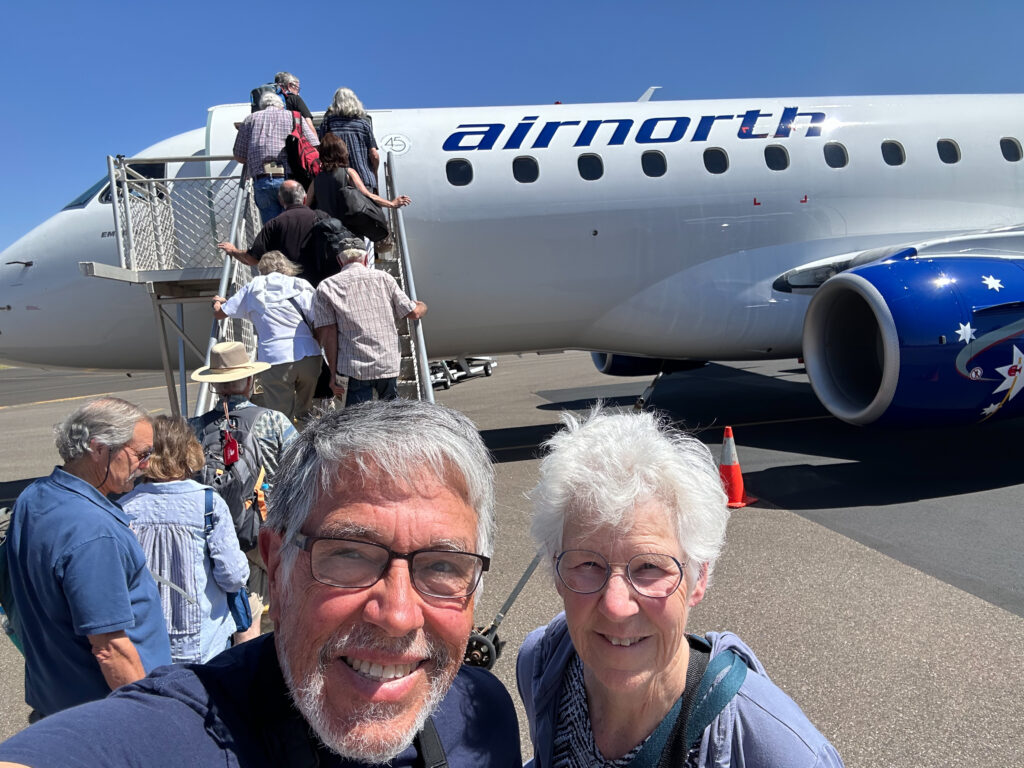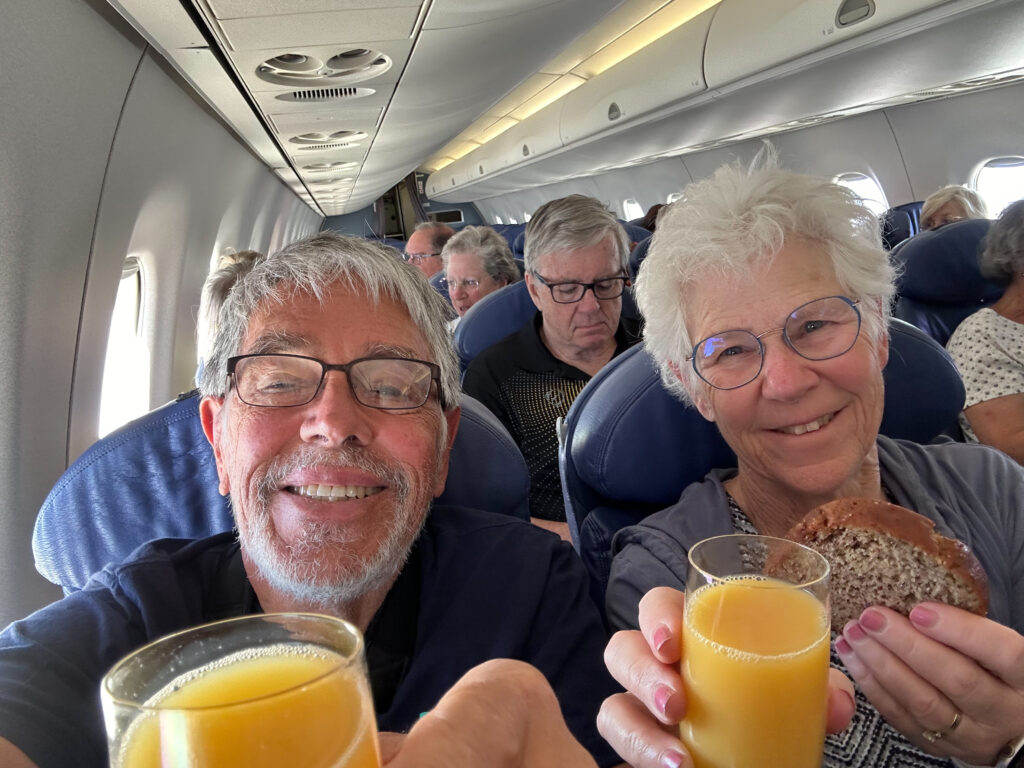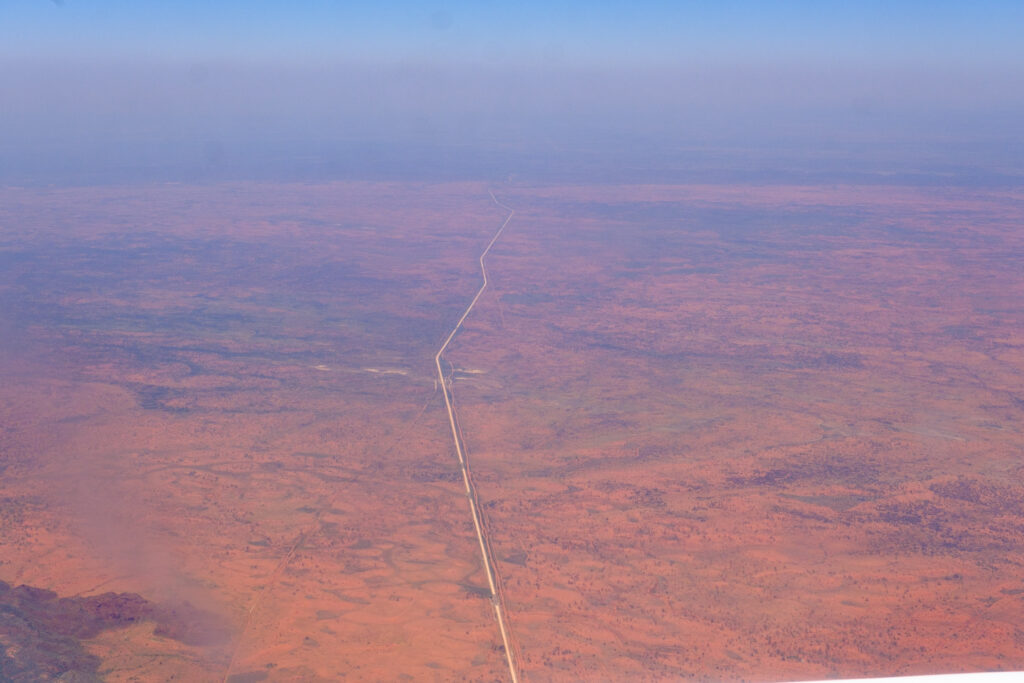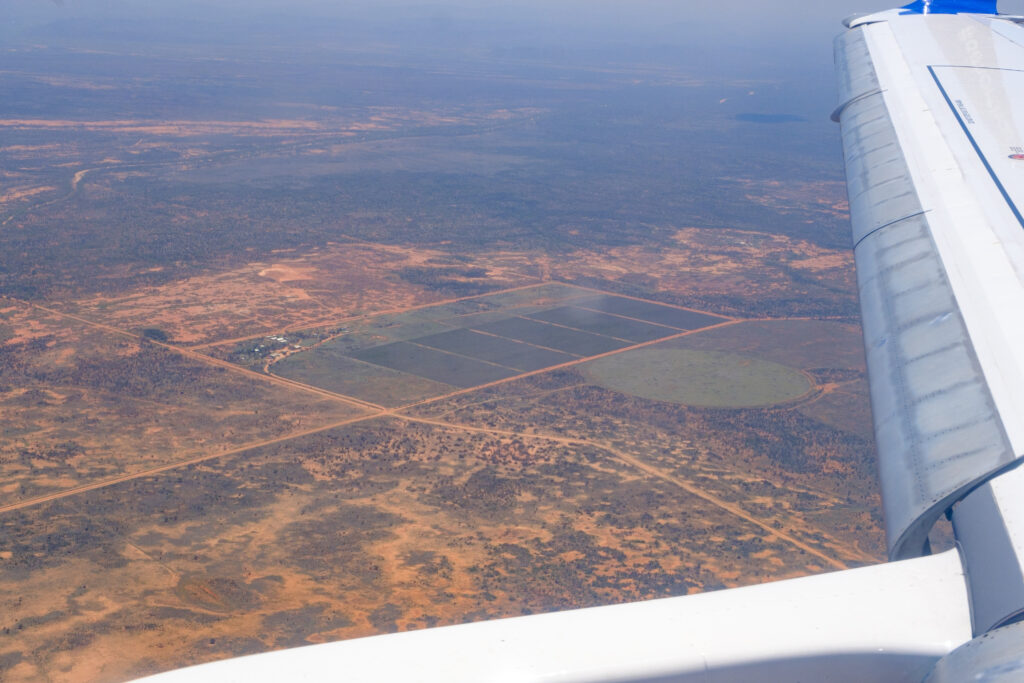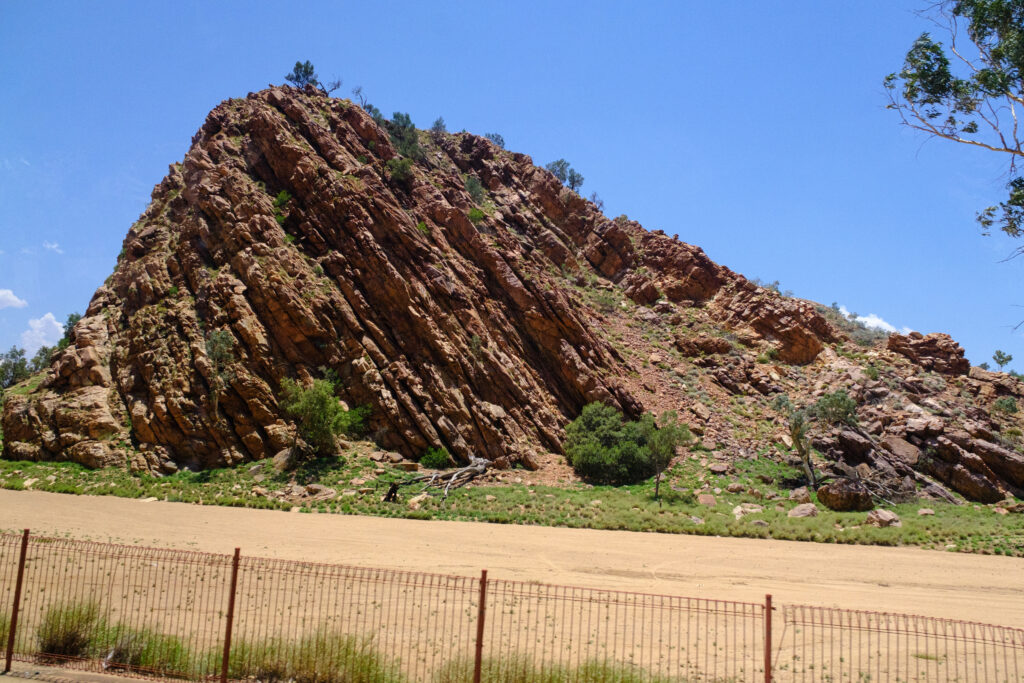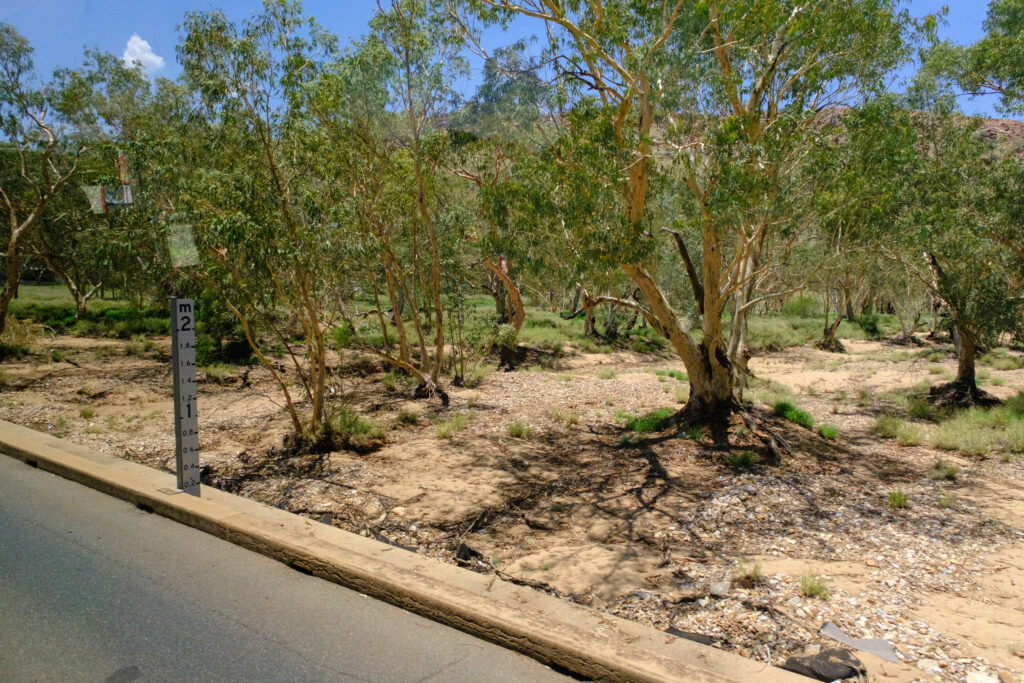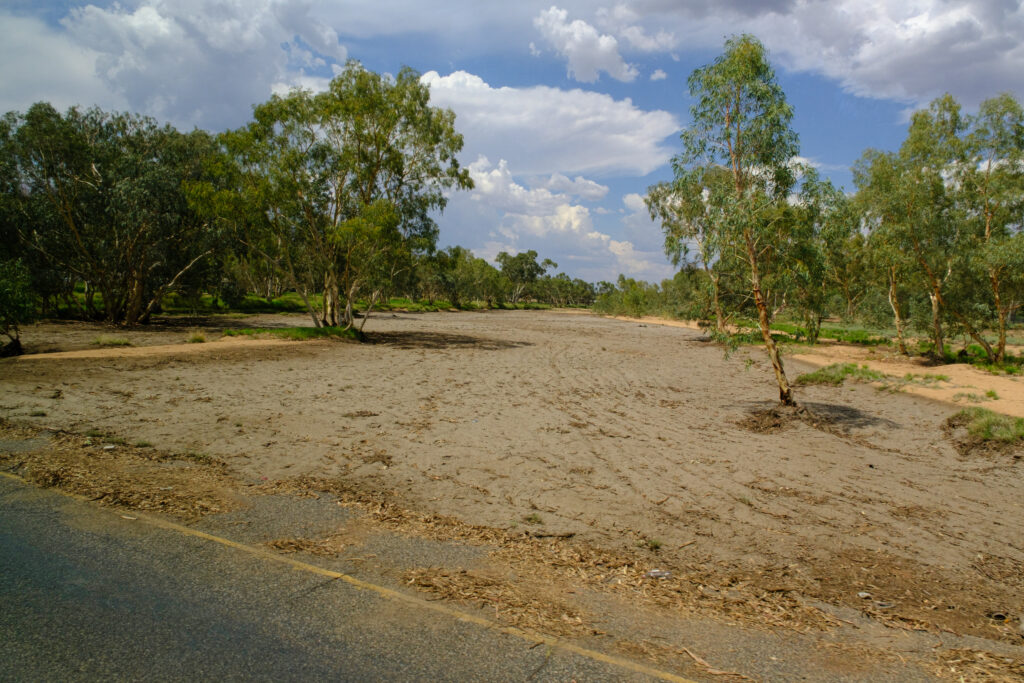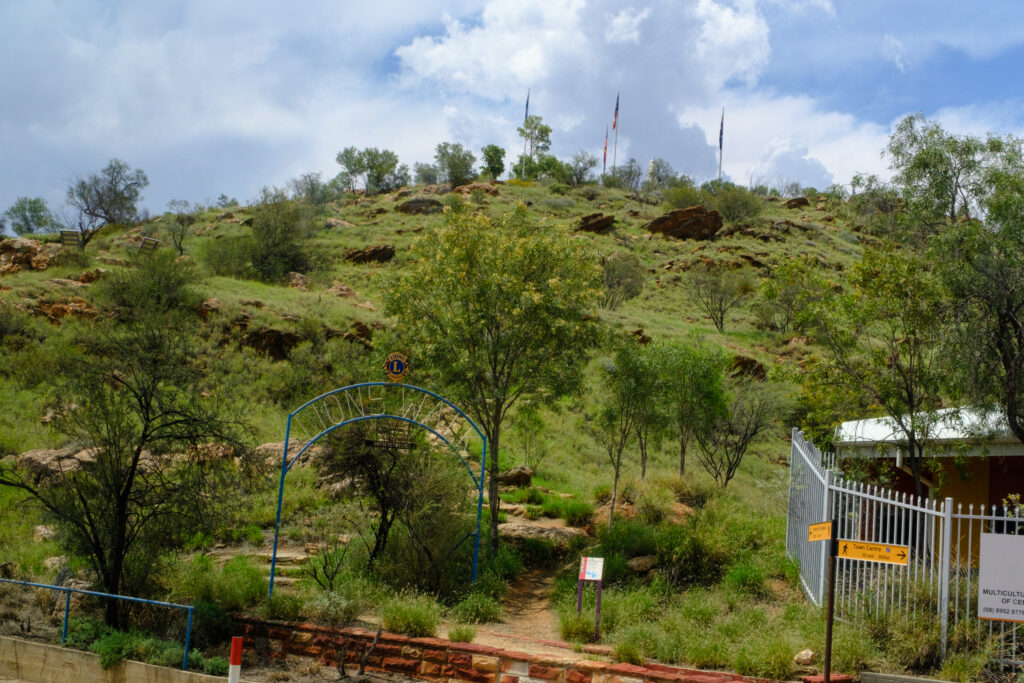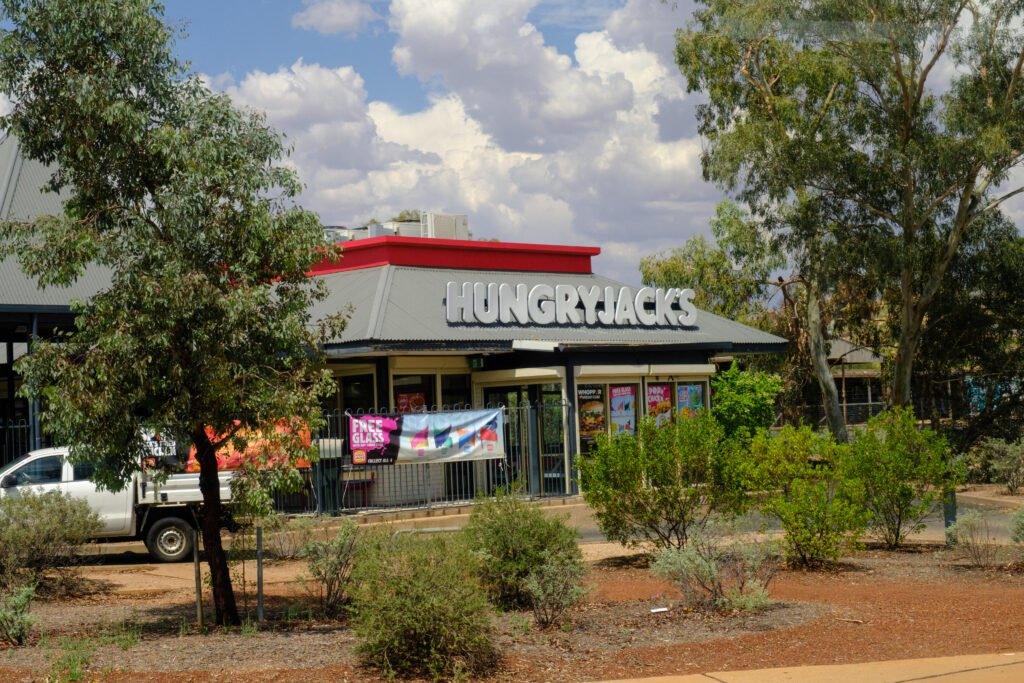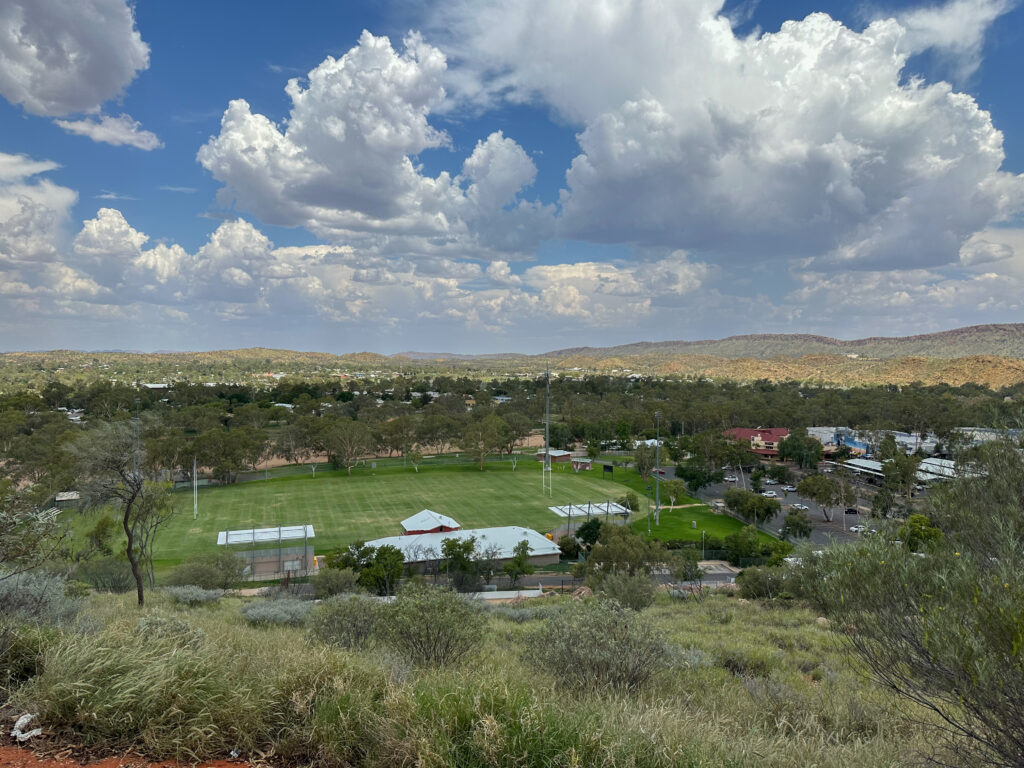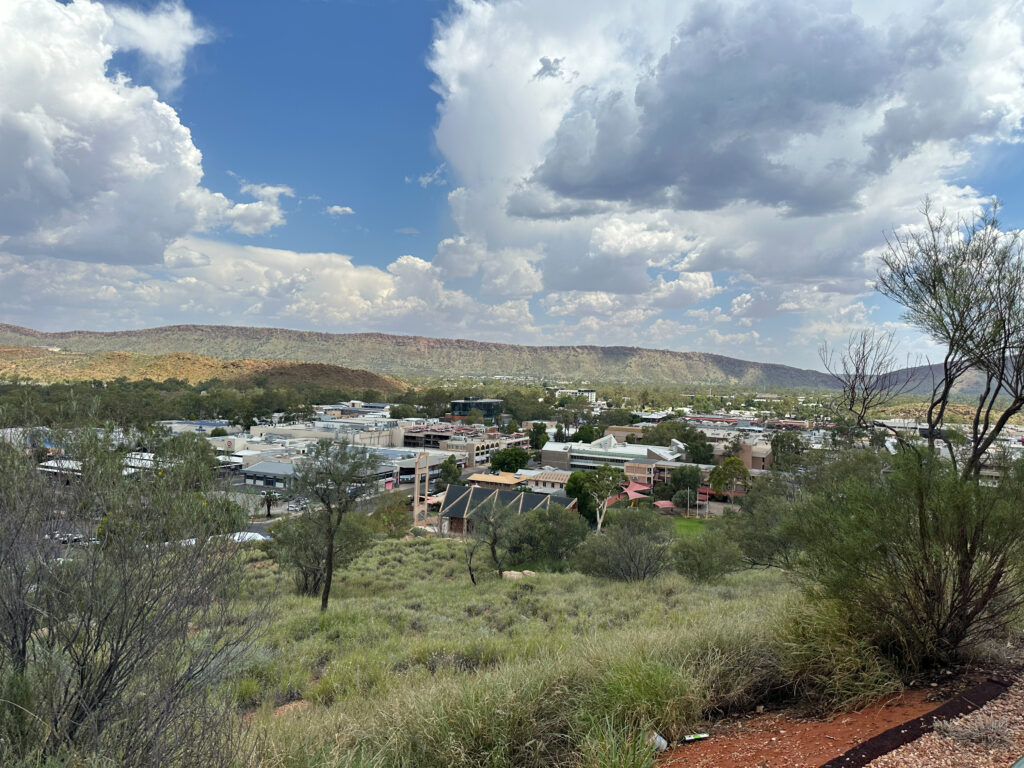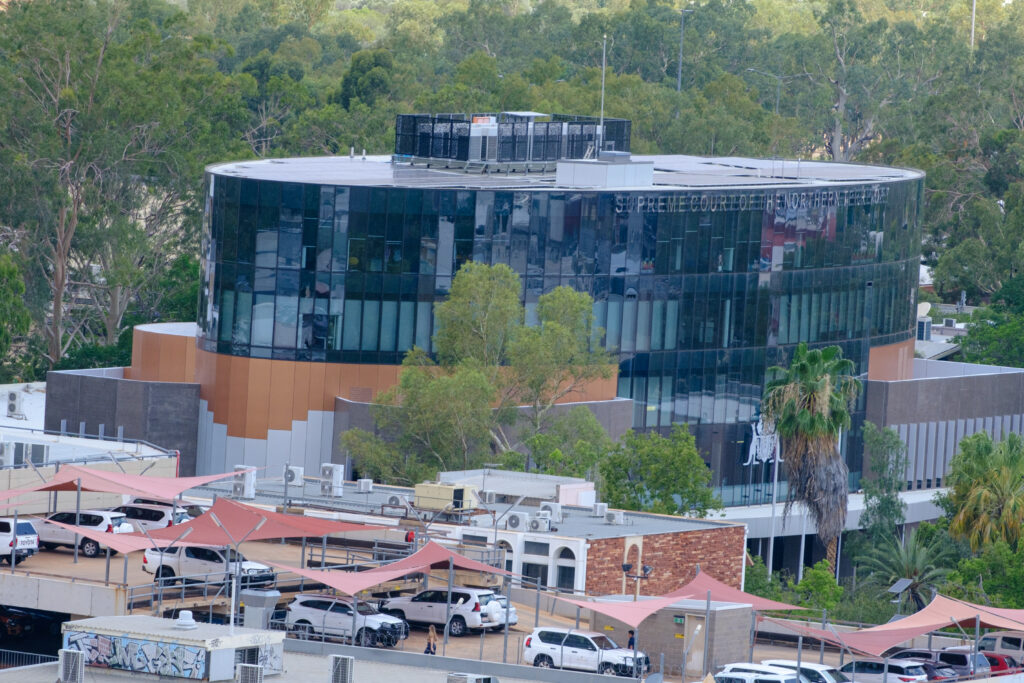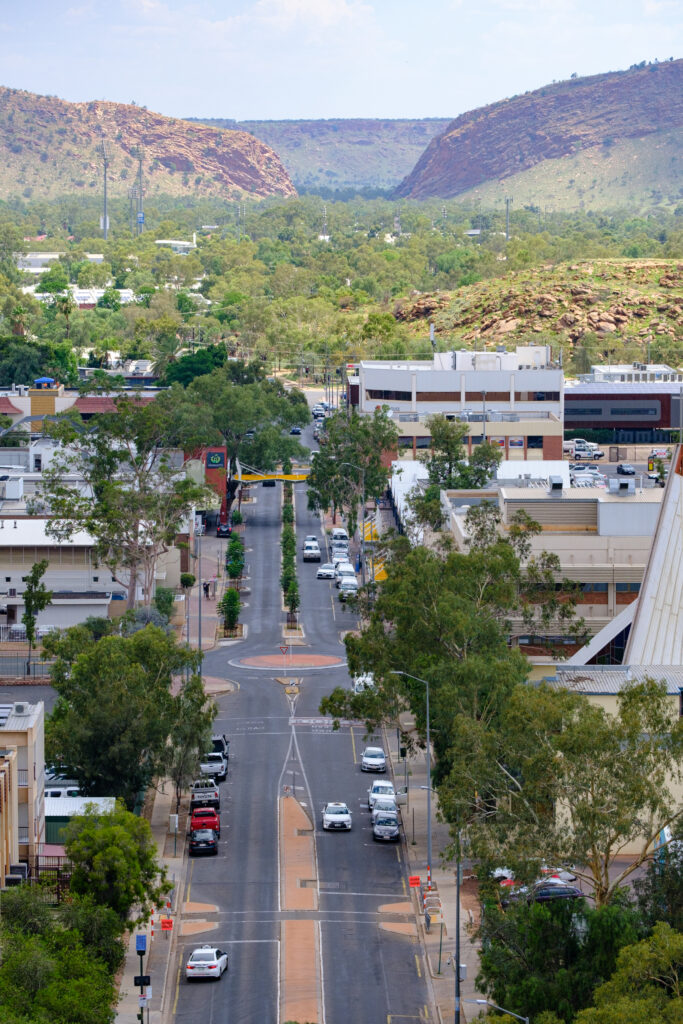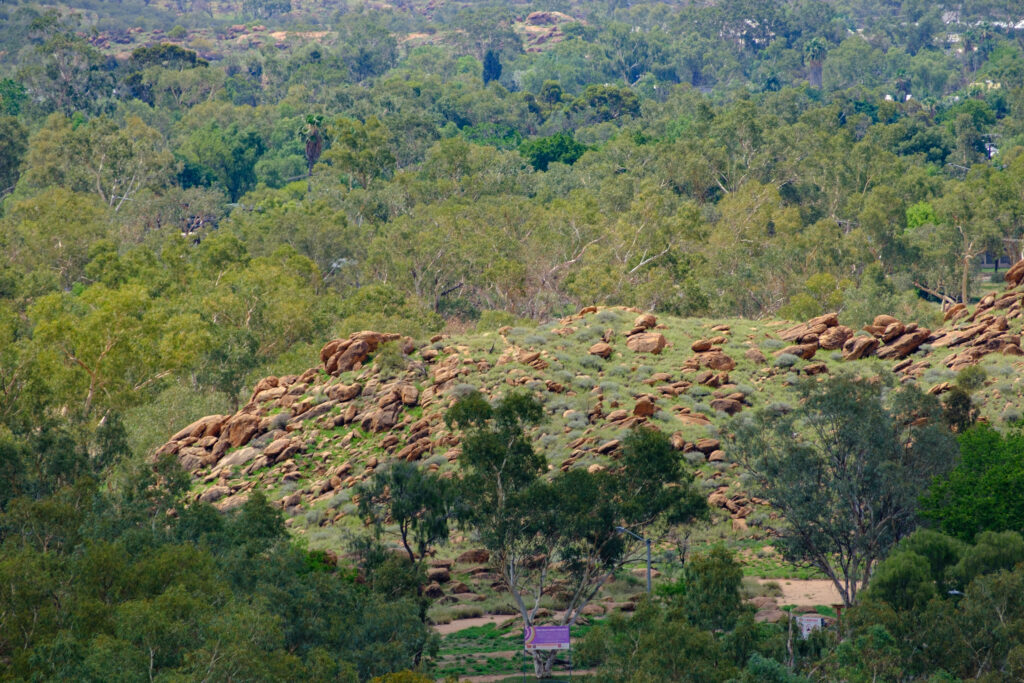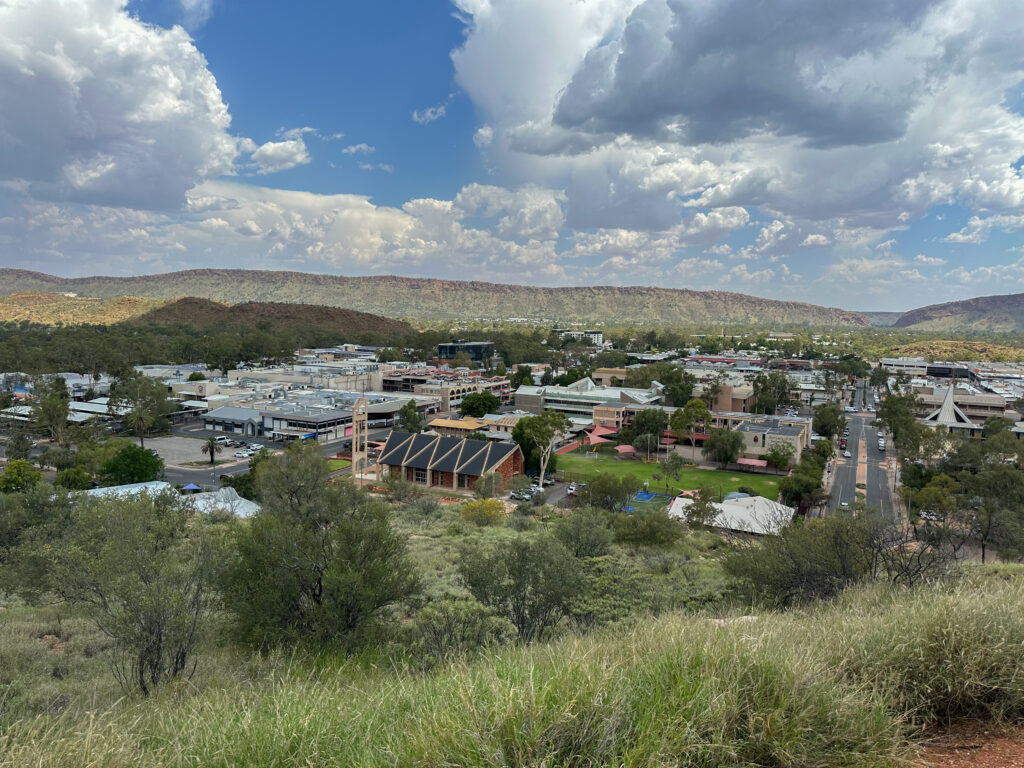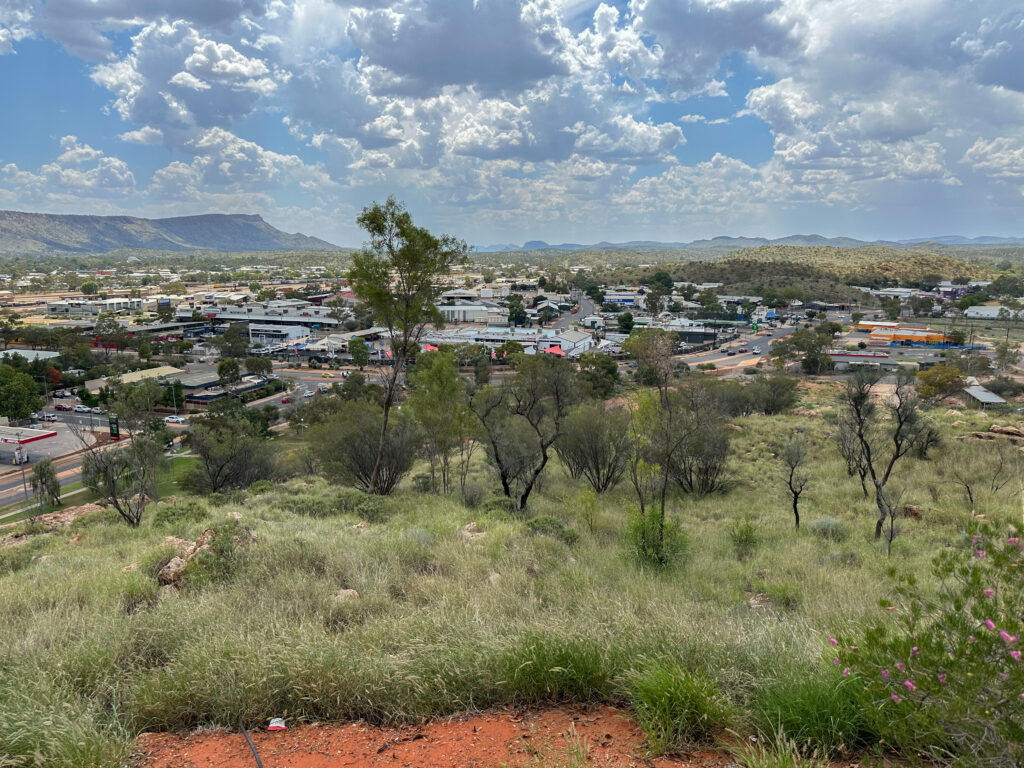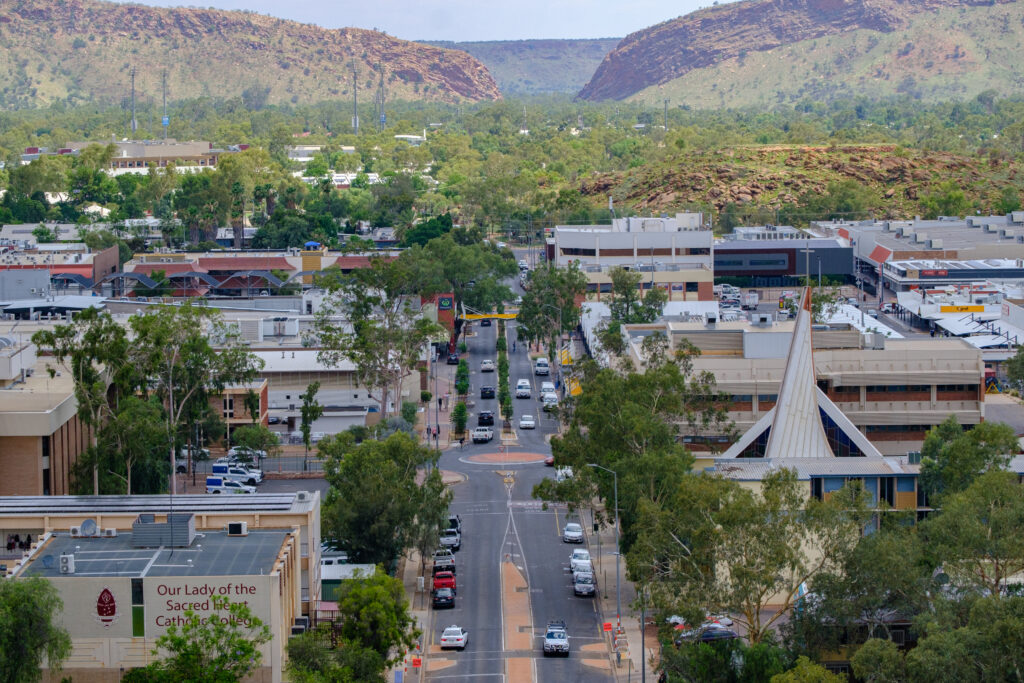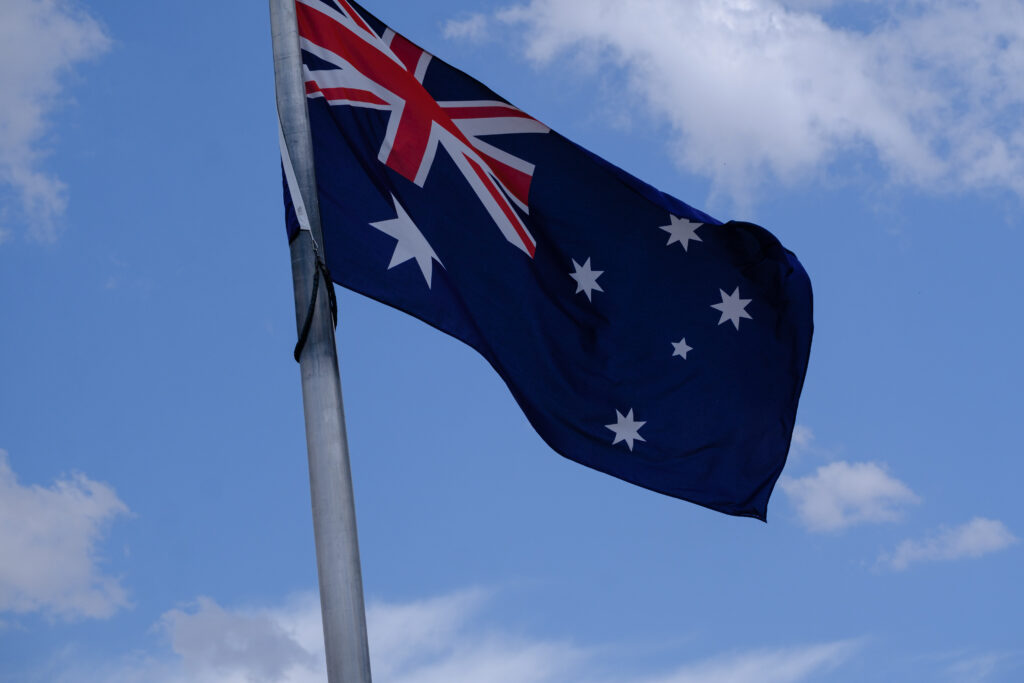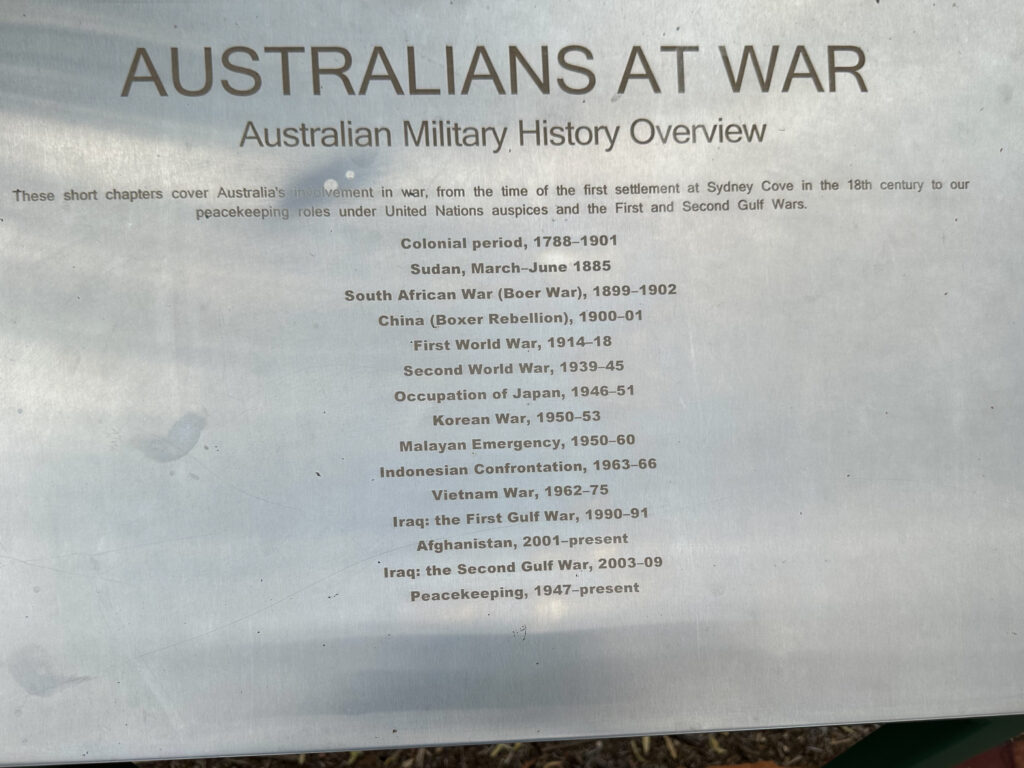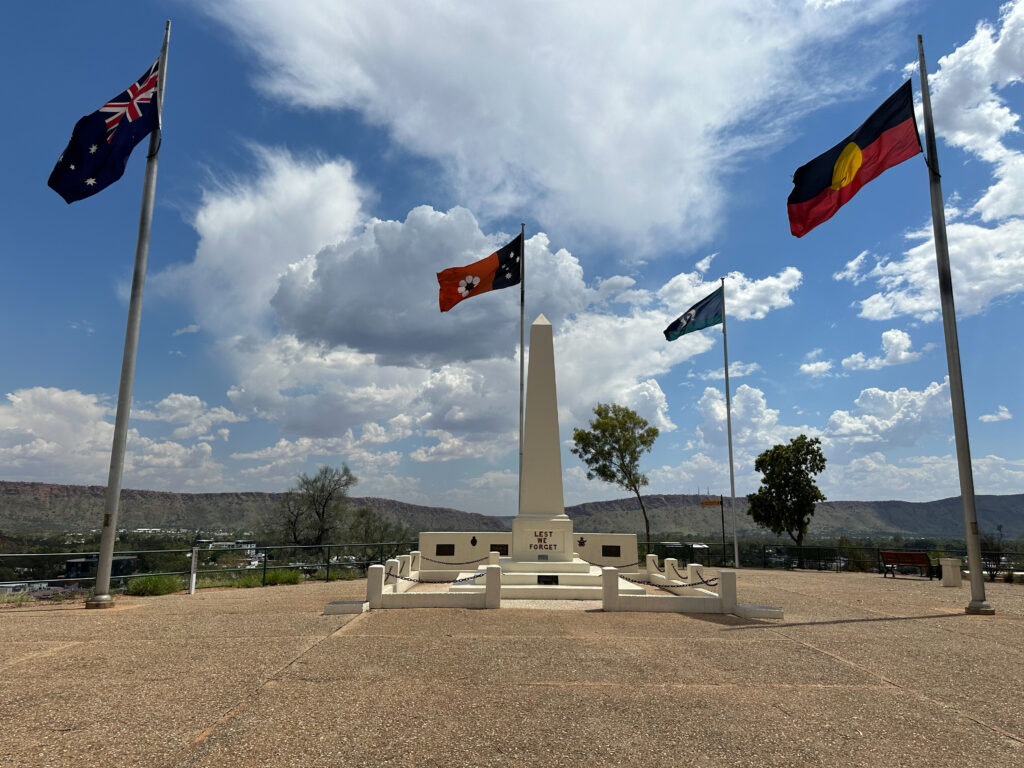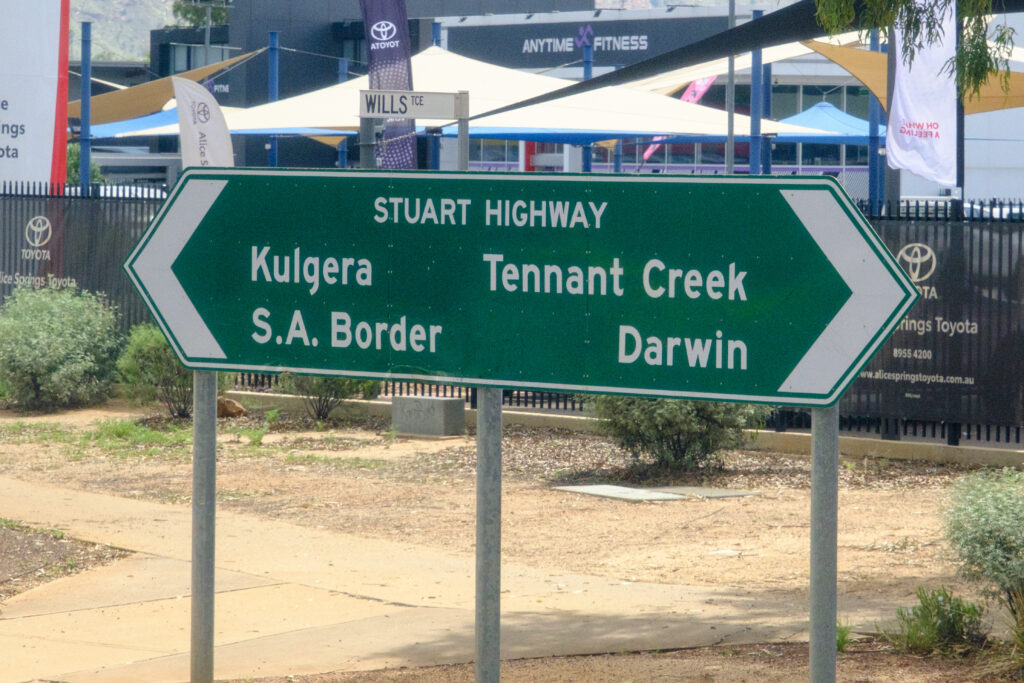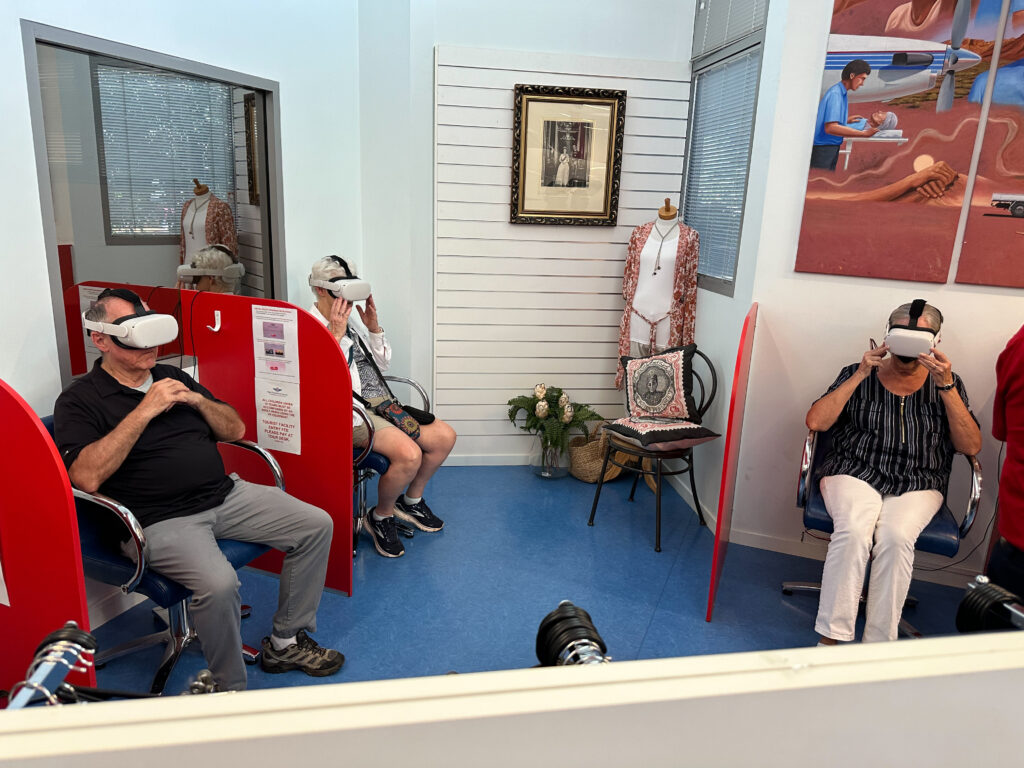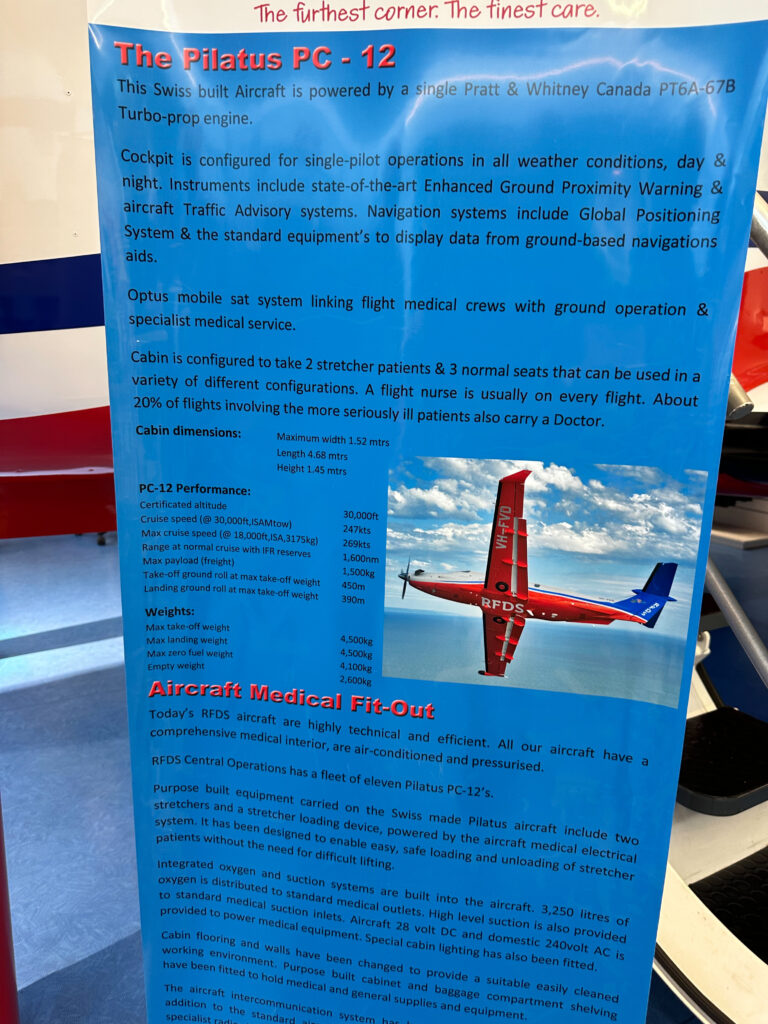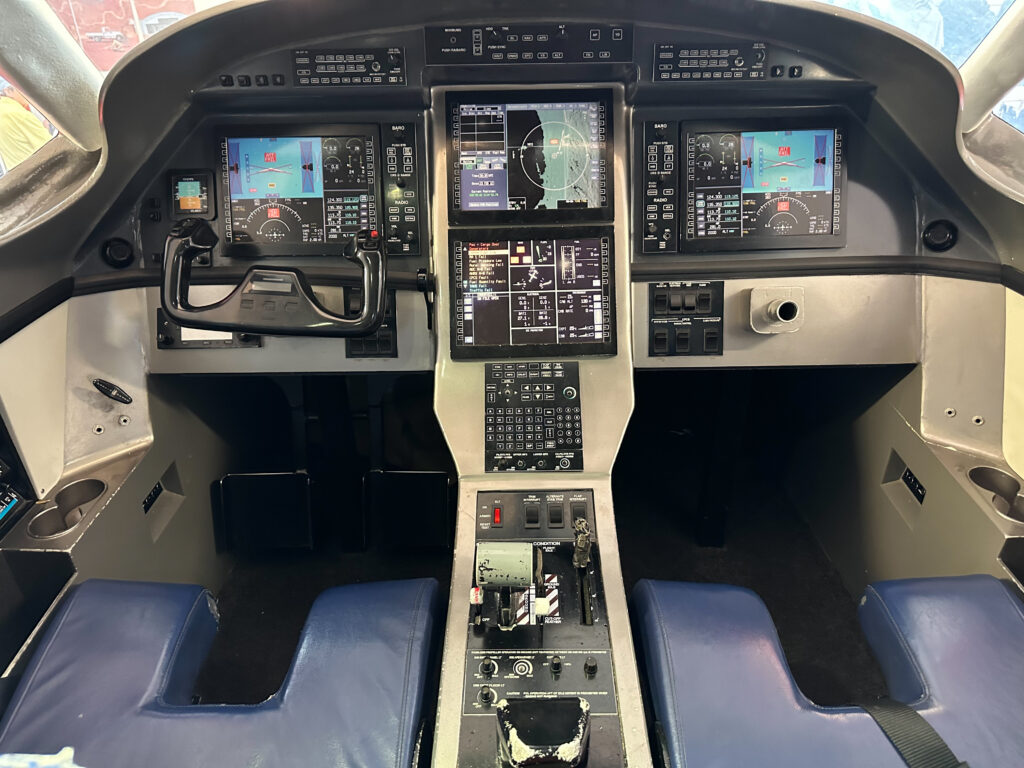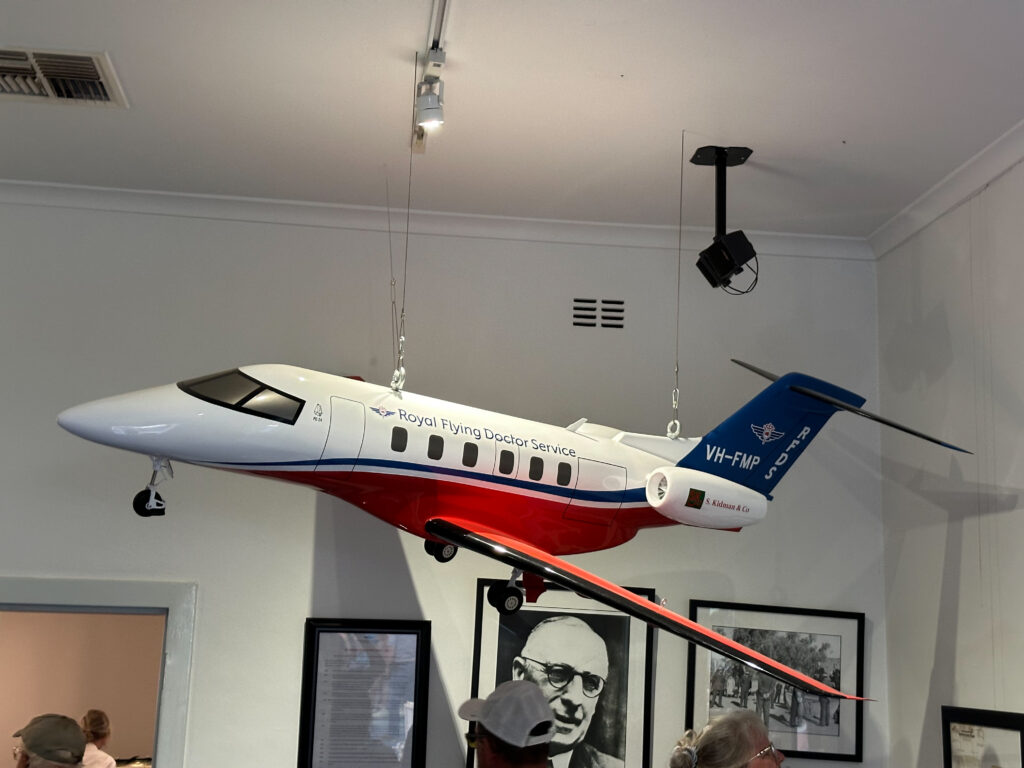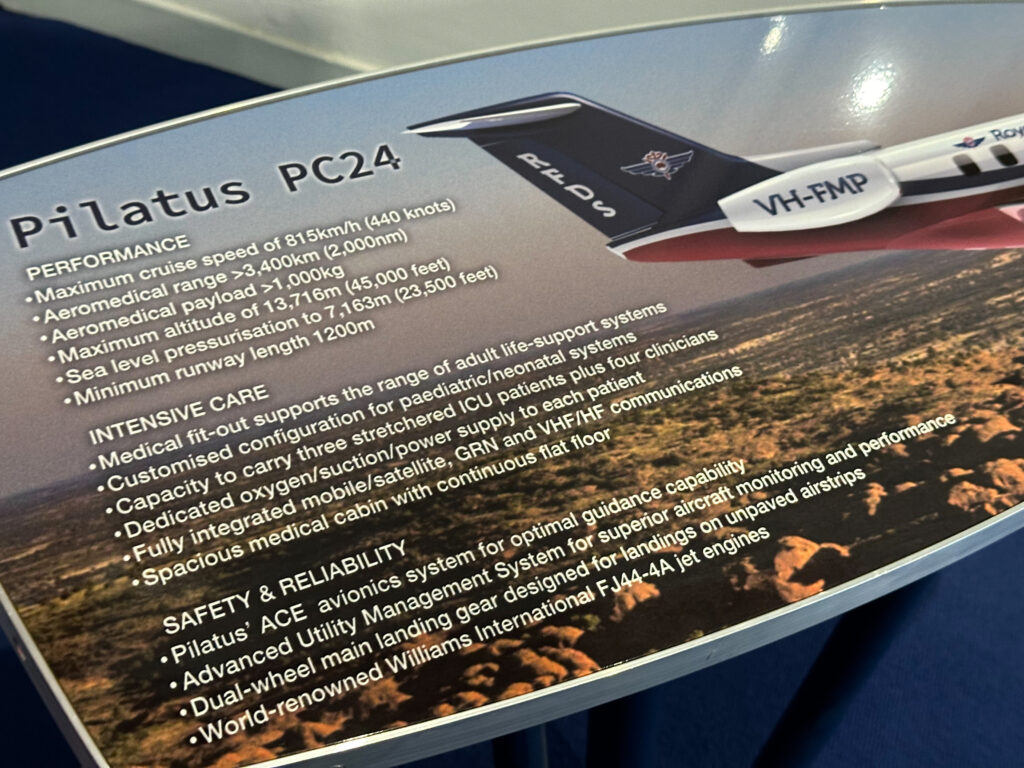A slower day today, moving from Uluru to Alice Springs. Viking chartered a private flight with Airnorth. There are fifty-odd of us, so it makes sense financially to do it that way. We arrived at the airport, which was completely closed until after noon, by 8:00 AM. Our flight was scheduled for 9:15 AM but it was an hour late. The plane had to fly from Darwin, almost 1,200 miles, to pick us up for the 250-mile trip to Alice Springs.
The delay was, “No worries, mate,” because, arriving at the Doubletree hotel at noon meant we had two hours before our first outing. Our rooms weren’t ready so nothing to do but eat lunch and blog. Lunch, however, was limited to a Thai/Indian restaurant on the hotel property. Judy had chicken, I had lamb. Great food but more than we probably needed.
The first stop of the afternoon was at Alice’s ANZAC memorial on top of a hill overlooking the city. ANZAC, you may recall, stands for Australia New Zealand Army Corp, the combined outfit that fought together in Italy during WWI. ANZAC Day, April 25, and this memorial site now commemorate all who died in the service to Australia. New Zealand does the same. The memorial is very effective.
We learned two interesting facts about Alice Springs, population 25,000. First, it has a Supreme Court building (the glass building in the pictures). This is remarkable because it’s the Northern Territory’s second Supreme Court building. The first is in Darwin. The legal eagles figured it was cheaper to have a court in Alice so folks wouldn’t have to hike the 900 miles to Darwin to try a case. Second, we learned that in Australia, Burger King is called Hungry Jack’s. Copyright thing. All the signage looks just like home.
We drove next to the Royal Flying Doctor Service, RFDS. On the way we traversed the Stewart Highway, the one that runs from Darwin in the north to Adelaide in the south, 1,600 miles or thereabouts. We saw a statue of John McDouall Stewart who led the first expedition along the route in 1861.
The RFDS was started by Presbyterian minister Reverend John Flynn in 1928. The objective was simple: bring doctors to people in need in the sparsely populated areas of Australia. The service has grown with the advances in aviation from biplanes to jets over the years. Communication was another big challenge in the early days. How do you call the doctor if you don’t have phone service? Clifford Peal developed a pedal-powered radio that solved that problem, starting with Morse Code and moving eventually to voice radio communications.
Today RFDS provides a wide range of services in addition to its original acute care mission. Primary care, health promotion, mental health services, dental services, telehealth services and more. They have more than 900 patient contacts every day. They have 81 aircraft based at 23 centers across Australia. Last year they transported 36,951 patients by air and 58,839 by road.
There’s a PBS series available about the RFDS. I haven’t seen it but some on our trip have and say it’s very good.
Tomorrow promises to be a full day exploring the Outback, including a chance to swim in a swimming hole. We’re too far south for saltwater crocodiles, so maybe we’ll dip our toes into whatever body of water they offer.
